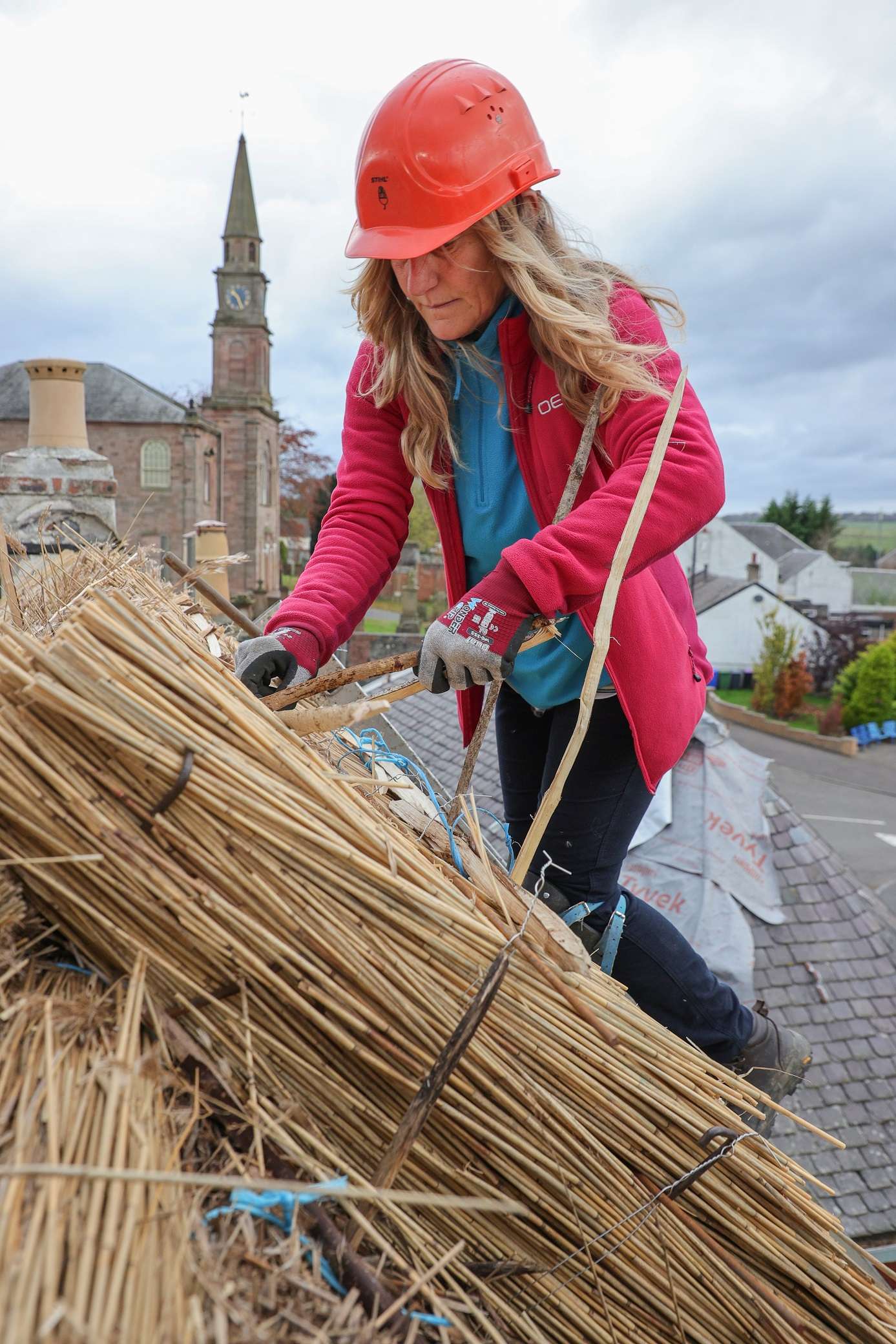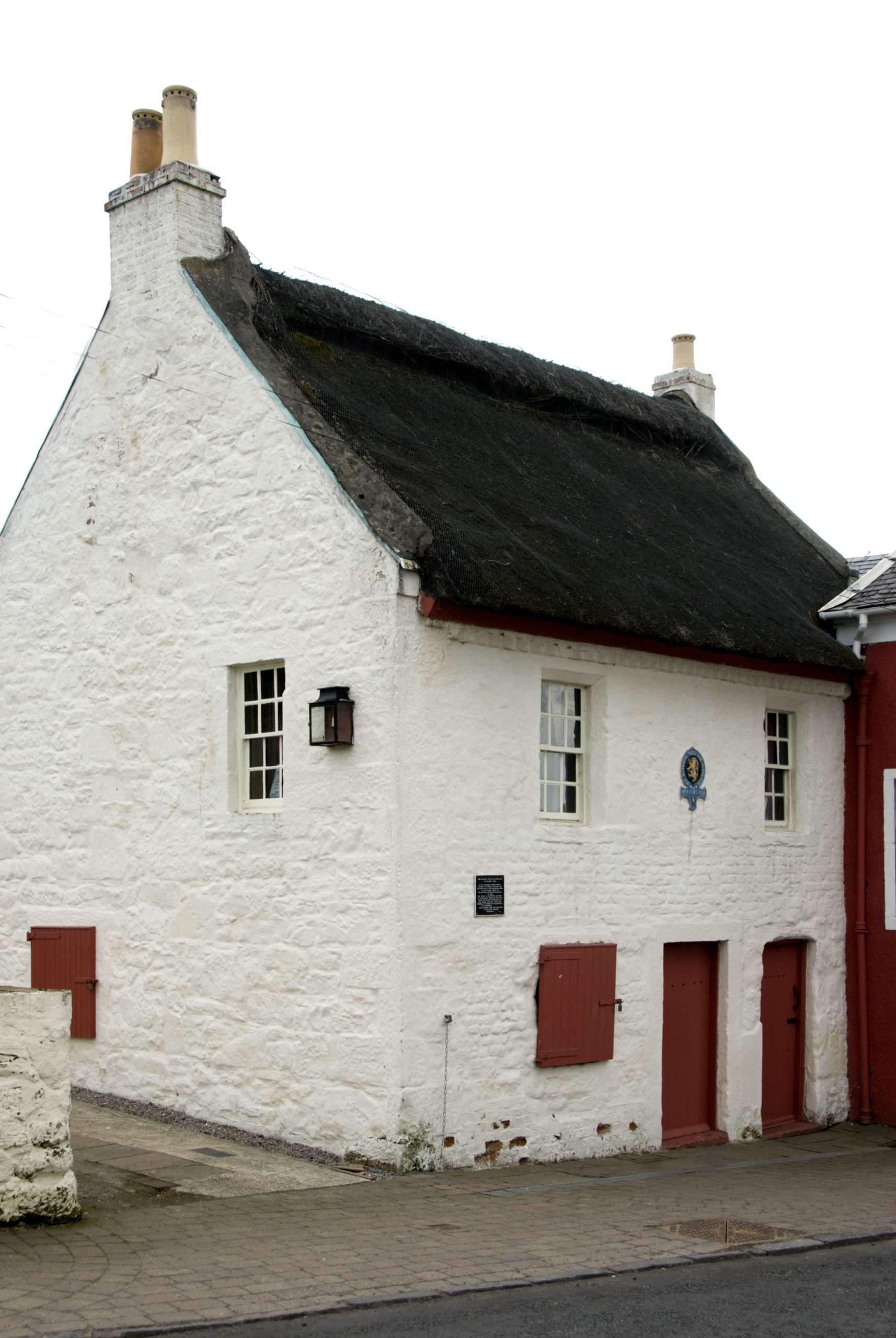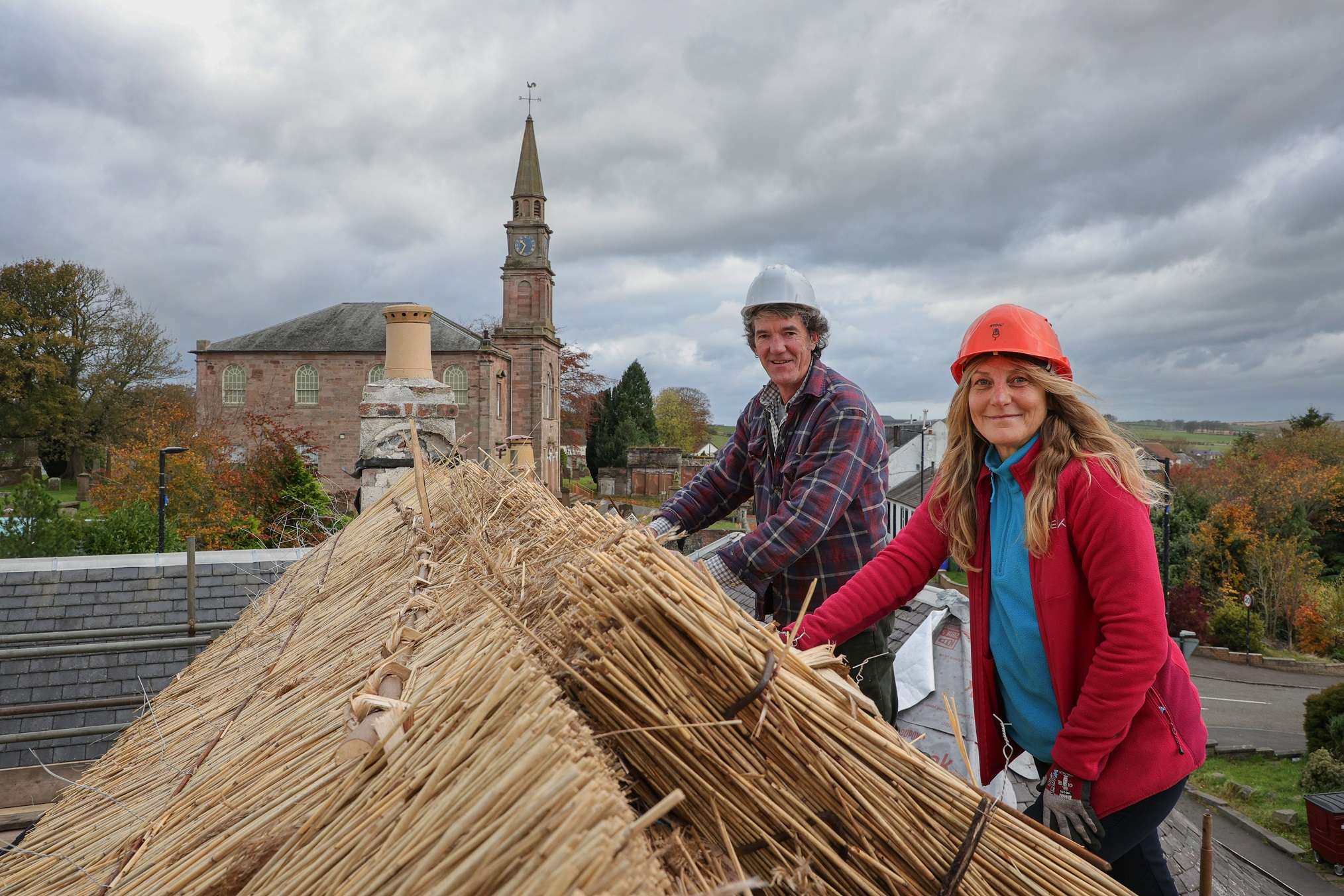Work is underway to re-thatch the roof of the historic Bachelors’ Club, the site of Robert Burns’ social club where in the late 1700s, he learned to dance, became a freemason, and created a debating society. The Grade A-listed building, cared for by the National Trust for Scotland, stands in the village of Tarbolton, South Ayrshire. While it plays an important role in telling the story of Robert Burns’ life, it is also an excellent example of 17th century vernacular architecture. And as one of approximately 220 thatched buildings remaining in Scotland, it’s vital that its history is respected and preserved in the conservation process.
The Trust’s project is the first phase of work at the Bachelors’ Club and involves re-thatching the entire building; reforming the ridge of the thatch in a more traditional timber board finish; rebuilding a brick chimney head in traditional stone; repairs to roof timbers; replacement of lead valleys and flashings with neighbouring properties; and repairs to stone skews. A second phase planned for early 2025 will look at the external elevations and internal finishes of the building. These major works are being carried out by a team of thatchers travelling from Yorkshire due to the skills shortage in this traditional trade across the UK. They will be supported by local joiners, stonemasons, and roof workers, and an archaeologist will have a watching brief during the works to record any findings of interest or importance.
Traditional trades

The conservation works were made possible by the Historic Environment Scotland Partnership Fund Grant, an ongoing partnership that enables the charity to not only carry out vital work but to support the continuation of traditional crafts and skills. To make the project as sustainable as possible, the reed for the thatching has been acquired from a Tayside RSPB reserve. Due to space challenges, it was originally stored at Culzean Castle and Country Park, another of the Trust’s properties in the southwest, before it was moved to a farm near Tarbolton for the thatchers to collect each day. The spent reed will be taken back to the farm where it will be used for mulch, minimising any waste.
Laura Baillie, Building Conservation Surveyor at the National Trust for Scotland, said: “This is a really special project that has taken a huge amount of logistical coordination. From appointing skilled tradespeople, which is a challenge in itself with traditional trades like thatching, to sourcing the reed and appropriate materials, we have worked hard to ensure we are preserving this 300-year-old building in a way that is both sustainable and true to its heritage. We’ve also included our Trust network and local communities by appointing local tradespeople where possible, and hopefully providing an element of upskilling as they observe the thatchers at work. And the local farm storing the reed and taking the spent reed for mulch belongs to a former stonemason apprentice at Culzean, so we owe a lot to the people around us who support projects like this.”
An important site in the history of Burns

Caroline Smith, Operations Manager at Bachelors’ Club, said: “This is such an important site in the history of Burns’ life and an important 17th century building in its own right. With so few thatched buildings remaining in Scotland, this is vital conservation work for the Trust. This is the first phase of a larger project, with the next phase including repairs to the external and internal walls of the building, as well as carrying out thatch maintenance at Souter Johnnie’s Cottage in Ayrshire, another historical link to Burns. We are dedicated to preserving these important buildings for everyone to enjoy for many years to come.”
The ongoing works at both the Bachelors’ Club and Souter Johnnie’s Cottage require additional funding and support. This spring, the team will peel back the paint and plaster, repair the brick and stone below, and then the exterior of the buildings will be covered with harling, a mixture of lime and aggregate to protect them. It will cost £330,000 to complete these works and the Trust requires £130,000 not currently covered by funding. Donations from generous supporters will directly assist the vital preservation of Burns’ legacy at these iconic locations.
The Bachelors’ Club is closed to the public while these works take place, with plans to reopen in 2025. People interested in learning more about Burns can visit the Robert Burns Birthplace Museum in Alloway, Ayr, which is open all year round.
For more information about the project, or to make a donation to these works, please visit: www.nts.org.uk/burnsappeal.

